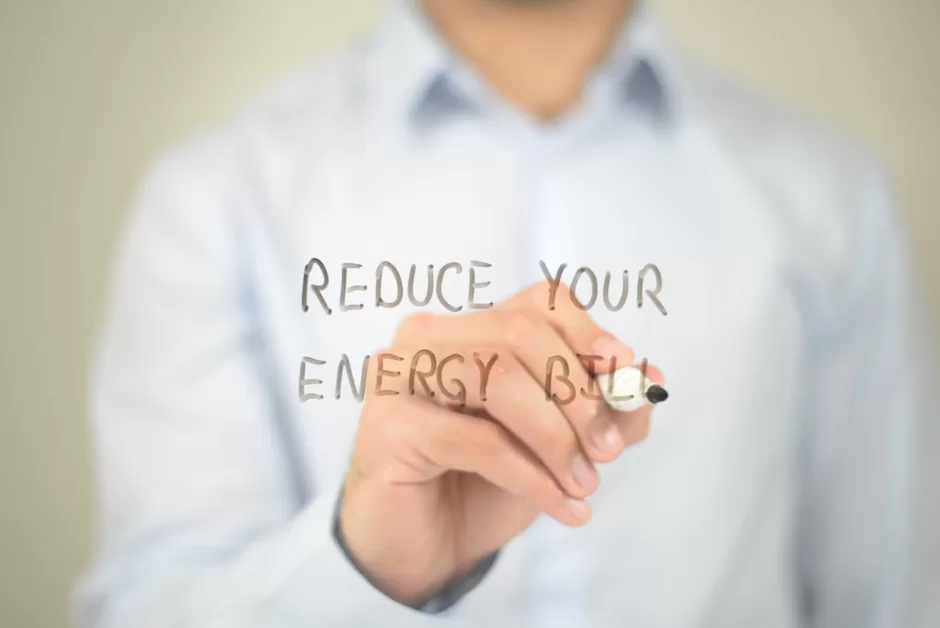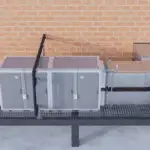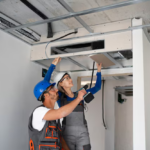1. The Basics of Energy Star HVAC Systems
When it comes to reducing your energy bills, understanding the basics of Energy Star HVAC systems is essential. Energy Star HVAC systems are designed to be more efficient and environmentally friendly than traditional systems. These systems use advanced technology to provide heating, ventilation, and air conditioning while consuming less energy. By upgrading to an Energy Star HVAC system, you can enjoy a comfortable home environment while saving on your energy costs.
One key feature of Energy Star HVAC systems is their high energy efficiency ratings. These ratings indicate how well the system converts energy into heating or cooling power. Higher ratings mean better efficiency, which translates to lower energy consumption and reduced utility bills. When shopping for an HVAC system, look for the Energy Star label and compare the energy efficiency ratings to make an informed decision that will benefit both your home and the environment.
In addition to energy efficiency, Energy Star HVAC systems are also known for their advanced features such as programmable thermostats, variable speed motors, and smart ventilation systems. These features allow for precise temperature control, reduced energy wastage, and improved indoor air quality. By taking advantage of these features, you can optimize your HVAC system’s performance and maximize energy savings in the long run.
2. Understanding the Energy Star Rating
To truly harness the benefits of Energy Star HVAC systems and reduce your energy bills, it’s crucial to understand the Energy Star rating system. The Energy Star rating is a certification awarded to products that meet strict energy efficiency guidelines set by the U.S. Environmental Protection Agency. When an HVAC system carries the Energy Star label, it means it has undergone rigorous testing to ensure it meets or exceeds these guidelines.
When evaluating the Energy Star rating of an HVAC system, pay attention to both the overall rating and the specific ratings for heating and cooling efficiency. Understanding these ratings can help you choose a system that is tailored to your specific energy needs and climate conditions. By selecting an HVAC system with a high Energy Star rating, you can significantly reduce your energy consumption and lower your monthly utility bills.
Moreover, the Energy Star rating also takes into account factors such as noise levels, airflow distribution, and system controls. These additional criteria ensure that Energy Star HVAC systems not only save energy but also provide enhanced comfort and convenience for homeowners. By investing in an HVAC system with a reputable Energy Star rating, you can enjoy a more efficient and sustainable home environment year-round.
3. Efficient Temperature Control Strategies
When it comes to optimizing your Energy Star HVAC system for energy savings, implementing efficient temperature control strategies is key. Start by setting your thermostat to the most energy-efficient temperatures for each season. During the winter, aim for a lower temperature setting when you’re away from home or asleep, and opt for warmer clothing to stay comfortable. Likewise, in the summer, try to raise the temperature a few degrees to reduce cooling costs while maintaining a comfortable indoor environment.
Another effective temperature control strategy is to use programmable thermostats to automatically adjust the temperature based on your schedule. This way, you can avoid heating or cooling an empty house, saving energy and money in the process. Additionally, consider installing zone control systems that allow you to heat or cool specific areas of your home as needed, further reducing energy waste and optimizing comfort levels.
4. Optimizing Ventilation for Energy Savings
Proper ventilation is essential for maintaining a healthy and energy-efficient home environment. Energy Star HVAC systems are designed to provide optimal ventilation while minimizing energy loss. To further enhance ventilation efficiency, make sure to clean or replace air filters regularly to prevent dust and debris buildup, which can obstruct airflow and reduce system efficiency. Additionally, consider using ceiling fans to improve air circulation and reduce the workload on your HVAC system.
For even greater energy savings, explore the option of installing an energy recovery ventilator (ERV) or heat recovery ventilator (HRV) in your home. These systems help exchange indoor and outdoor air while recovering energy in the process, reducing the workload on your HVAC system and improving overall indoor air quality. By optimizing ventilation in your home, you can enhance energy efficiency and create a healthier living environment for you and your family.
5. Sealing and Insulating Your Home for Efficiency
One often overlooked but critical aspect of improving energy efficiency in your home is sealing and insulating it properly. Leaks and inadequate insulation can result in energy wastage and higher utility bills. Start by sealing air leaks around doors, windows, and ductwork to prevent conditioned air from escaping and outside air from infiltrating your home. Additionally, consider adding insulation in your attic, walls, and floors to maintain a consistent indoor temperature and reduce the strain on your HVAC system.
By sealing and insulating your home, you can reduce the workload on your Energy Star HVAC system, improve overall comfort, and lower your energy bills. Remember that a well-insulated and airtight home not only enhances energy efficiency but also contributes to a more sustainable and environmentally friendly living space. Invest in proper sealing and insulation measures to make the most of your HVAC system and enjoy long-term energy savings.
6. Smart Thermostats and Energy Star HVAC Integration
Smart thermostats play a significant role in maximizing the energy-saving potential of your Energy Star HVAC system. These innovative devices allow you to control your home’s temperature remotely, set customized schedules, and receive energy usage insights in real-time. By integrating a smart thermostat with your HVAC system, you can optimize energy consumption, identify energy-saving opportunities, and adjust settings for maximum efficiency.
Beyond remote temperature control, smart thermostats also offer features like geofencing, learning algorithms, and energy usage reports. Geofencing allows your thermostat to adjust temperatures based on your location, ensuring energy efficiency when you’re away from home. Learning algorithms adapt to your preferences over time, further enhancing efficiency. Energy usage reports provide valuable data to help you track and manage your energy consumption effectively.
7. Regular Maintenance Tips for Energy Star HVAC Systems
To keep your Energy Star HVAC system operating at peak efficiency and extend its lifespan, regular maintenance is essential. Start by scheduling annual HVAC inspections and tune-ups performed by certified professionals. During these inspections, technicians can identify and address any issues that may be affecting your system’s performance, ensuring optimal operation and energy efficiency.
In addition to professional maintenance, there are several tasks you can perform regularly to keep your Energy Star HVAC system in top shape. These include changing air filters every 1-3 months, cleaning vents and ducts, and inspecting the outdoor unit for debris or obstructions. By staying proactive with maintenance, you can prevent costly repairs, improve system efficiency, and enjoy consistent comfort and energy savings year-round.
8. Alternative Energy Sources to Complement Your HVAC System
Incorporating alternative energy sources into your home can further complement the efficiency of your Energy Star HVAC system and reduce your reliance on traditional utilities. Consider installing solar panels to generate renewable electricity for powering your HVAC system and other household appliances. Solar energy not only reduces your carbon footprint but also allows you to take advantage of clean and sustainable power sources.
Another alternative energy option to explore is geothermal heating and cooling systems. These systems utilize the stable temperature of the earth to provide heating in the winter and cooling in the summer, offering energy-efficient and cost-effective climate control solutions. By integrating alternative energy sources with your Energy Star HVAC system, you can achieve greater energy independence, lower utility bills, and contribute to a greener future.
9. The Financial Benefits of Energy Star HVAC Upgrades
Investing in Energy Star HVAC upgrades not only yields environmental benefits but also significant financial savings in the long run. While the initial cost of upgrading to an Energy Star system may seem daunting, the energy savings and rebates offered by many utility companies can help offset this expense over time. By reducing your energy consumption and lowering your utility bills, you can recoup your investment and enjoy ongoing savings on heating and cooling costs.
Moreover, Energy Star HVAC systems are designed to be durable and reliable, requiring less maintenance and fewer repairs compared to traditional systems. This translates to additional cost savings and peace of mind for homeowners. Additionally, some regions offer tax incentives and rebates for installing Energy Star HVAC systems, further enhancing the financial benefits of making the switch to energy-efficient heating and cooling solutions.
10. Creating an Energy-Efficient Home Environment
To create a truly energy-efficient home environment, it’s essential to adopt a holistic approach that encompasses all aspects of energy consumption and sustainability. Start by conducting a home energy audit to identify areas where energy is being wasted and opportunities for improvement. Addressing issues such as insulation, air leaks, and inefficient appliances can help maximize energy efficiency and reduce your overall energy bills.
In addition to optimizing your HVAC system and implementing energy-saving strategies, consider investing in energy-efficient lighting, appliances, and electronics. LED light bulbs, ENERGY STAR-certified appliances, and smart home devices can all contribute to lower energy usage and reduced utility costs. By embracing energy-efficient practices and technologies throughout your home, you can create a more sustainable living space while enjoying the benefits of reduced energy bills.




